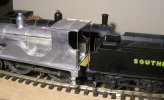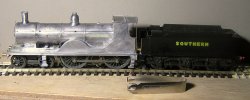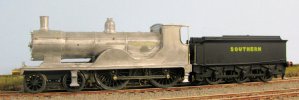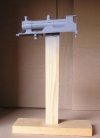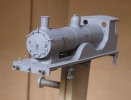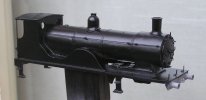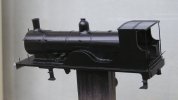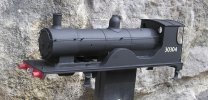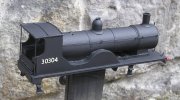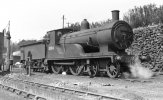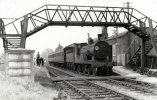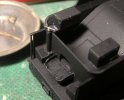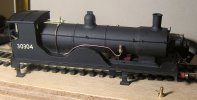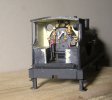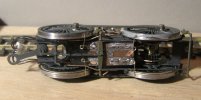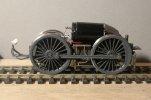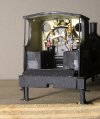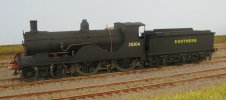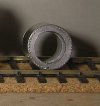Stevers
Western Thunderer
Have had a few problems with test running the T9 with the Zimo DCC chip fitted today. Initially there seemed to be a problem with it changing direction like the reverser was stuck. It would take quite a few volts to unstick, then it would shoot off - it also seemed 'buzzy' at low speeds. Once it had changed direction I had very good control over it again. This is a chassis that has never had even a trace of binding at any stage, the coupling rods would go slowly through horizontal OK and when reversing it didn't seem to matter where the coupling rods were.
Now I had made some quite significant changes to my EM test track to add a power take off to feed the 00 Gauge test track, and here's the rub - I was given the EM test track by a friend who was migrating to the senior scale, it has a built-in black faced Gaugemaster controller that I knew nothing about, but functioned well with all my Mashimas and ready -to-run stock. It didn't seem to be a mechanical problem and control via my chopped DC mini-controller hadn't been great either prompting the change to use the Gaugemaster.
The controller in question with Penbits fitted 33/1 and Bachmann N Class with SEF etched chassis.
It did seem to me that things had been OK up to the point that the Zimo chip came into the equation, so I thought it was time to eliminate that from my investigation. With no blanking plugs in stock, one was rustled up and fitted. This eliminated any problems with reversing, but now there was a distinct growl on moving off in either direction. A quick scan of the forums suggests that black faced Gaugemaster controllers have feedback which would explain the growl. Can anyone confirm if this is the case?
To be fair a DCC chip trying to work with the output from a DC feedback controller is not something that anyone in their right mind would try to cater for. Now I need to go and find that old H&M Flyer controller that was so utterly useless at powering my mini-drill!
Now I had made some quite significant changes to my EM test track to add a power take off to feed the 00 Gauge test track, and here's the rub - I was given the EM test track by a friend who was migrating to the senior scale, it has a built-in black faced Gaugemaster controller that I knew nothing about, but functioned well with all my Mashimas and ready -to-run stock. It didn't seem to be a mechanical problem and control via my chopped DC mini-controller hadn't been great either prompting the change to use the Gaugemaster.

The controller in question with Penbits fitted 33/1 and Bachmann N Class with SEF etched chassis.
It did seem to me that things had been OK up to the point that the Zimo chip came into the equation, so I thought it was time to eliminate that from my investigation. With no blanking plugs in stock, one was rustled up and fitted. This eliminated any problems with reversing, but now there was a distinct growl on moving off in either direction. A quick scan of the forums suggests that black faced Gaugemaster controllers have feedback which would explain the growl. Can anyone confirm if this is the case?
To be fair a DCC chip trying to work with the output from a DC feedback controller is not something that anyone in their right mind would try to cater for. Now I need to go and find that old H&M Flyer controller that was so utterly useless at powering my mini-drill!
Last edited:



